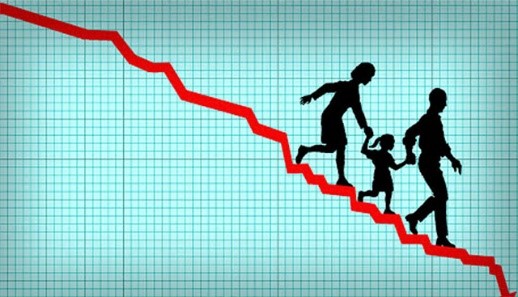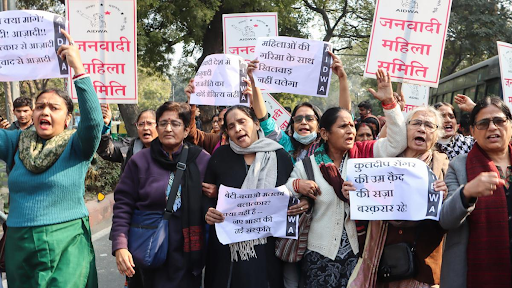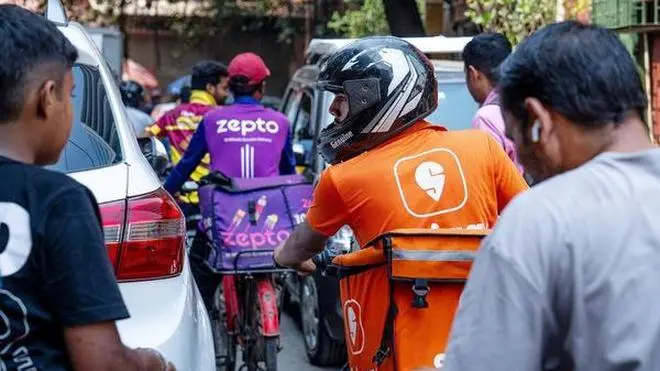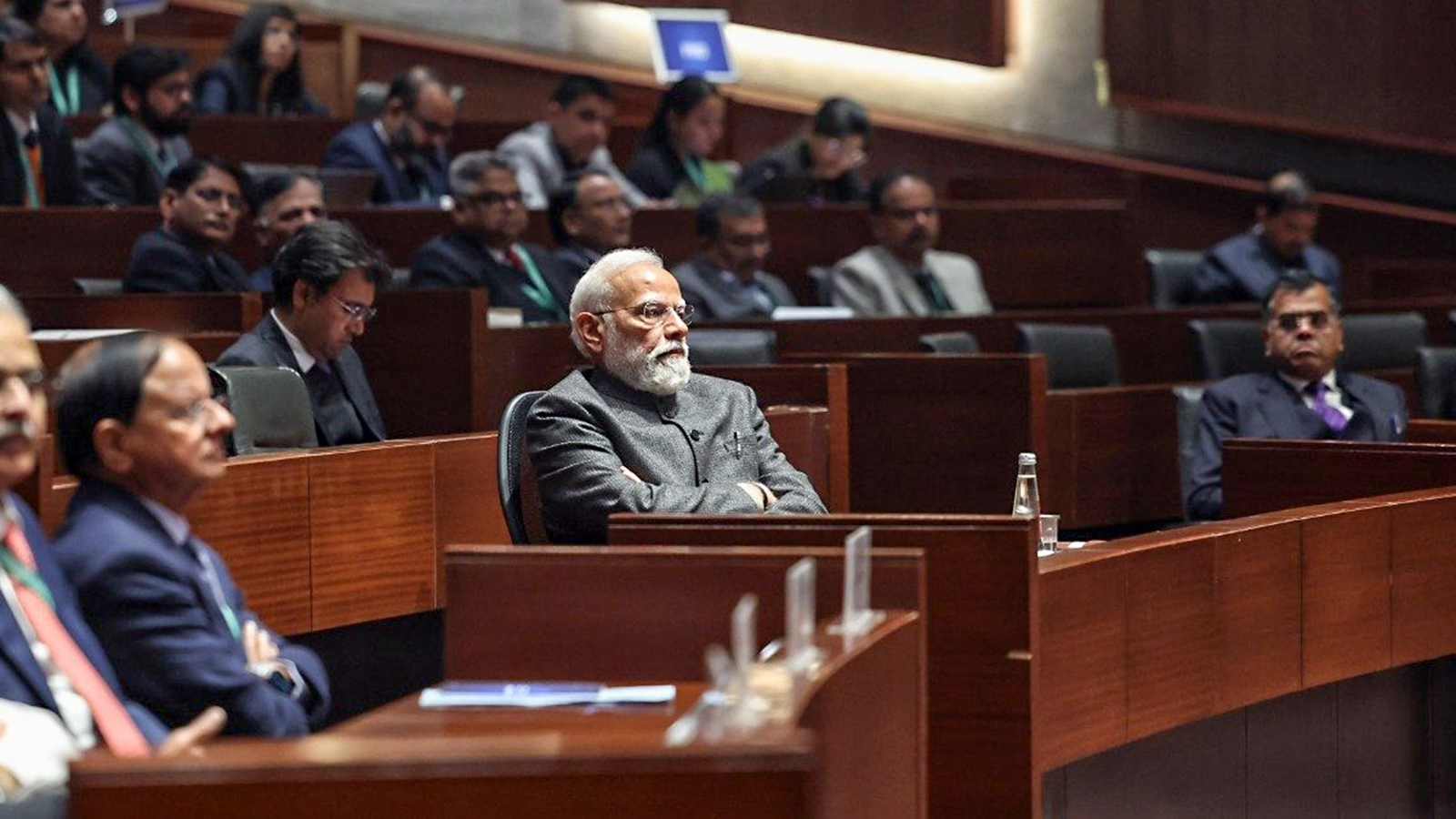Description

Disclaimer: Copyright infringement not intended.
Context
- India's population is estimated to reach close to 1.7 billion by 2065, according to the UN Population Division.
- Also, a report from The Lancet projects India's total fertility rate (TFR) to decrease to 1.29 by 2051.
Total Fertility Rate (TFR)
- The Total Fertility Rate(TFR) of a population is the average number of children that are born to a woman over her lifetime if:
-
- they were to experience the exact current age-specific fertility rates (ASFRs) through their lifetime
- and they were to live from birth until the end of their reproductive life.
- It is obtained by summing the single-year age-specific rates at a given time. As of 2023, the total fertility rate varied widely across the world, from 0.72 in South Koreato 6.73 in Niger.
Recent Reports
- India's population is estimated to reach close to 1.7 billion by 2065, according to the UN Population Division.
- The focus on India's large population size has overshadowed discussions on other demographic aspects like age structure, population quality, and its contribution to economic growth.
- A report from The Lancet projects India's total fertility rate (TFR) to decrease to 1.29 by 2051. This projection is based on complex demographic modeling conducted for 204 countries as part of the global burden of disease study.
- The estimate has a range of 0.97 to 1.61, indicating scientific rigor in methodology and offering insights into India's population dynamics.
Discrepancies in TFR:
- TFR projections by the government's technical group and the UN are higher than The Lancet's findings, suggesting the possibility of India stabilizing below the 1.7 billion mark earlier than 2065.

Factors Driving Demographic Transition
- Rapid Economic Development: Economic growth, particularly since the early 21st century, has been a key driver of India's demographic transition.
- Reduction in Mortality Rates: Lower infant and child mortality rates have reduced the need for larger families to provide old-age support.
- Women's Empowerment: Increased women's education and participation in the workforce have contributed to declining fertility rates.
- Improvements in Living Conditions: Better housing conditions and old-age security systems have further facilitated demographic transition.
Immediate and Long-Term Impacts
- Initial Effects of TFR Decline: A rapid decline in TFR leads to a decrease in the dependency ratio and a higher proportion of working-age adults, stimulating economic growth and intergenerational transfers.
- Future Challenges: However, this decline also results in a larger elderly dependent population, similar to patterns observed in other countries like China and Japan.
- Projected Dependency Ratio: India's dependency ratio, accounting for both young and old dependents relative to the working-age population, is expected to increase from 13.8 in 2011 to 23 in 2036.
Regional Disparities and Transition Dynamics
- Uneven Transition Across States: Transition to replacement-level fertility varies across states, with larger states like Uttar Pradesh and Bihar expected to take a decade to achieve stabilization.
- Inter-District Variations: Significant differences exist within states, with some districts experiencing faster transitions than others, highlighting the complexity of demographic change.
Economic Implications and Labor Dynamics
- Positive Economic Impact: Demographic transition is expected to enhance labor productivity in several states through:
- Increase in capital resources and infrastructure per capita.
- Reallocation of resources towards education and skill development.
- Changes in age distribution, leading to a larger fraction of the labor force.
Implications for Education
- Impact of Declining TFR: Lower TFR leads to fewer children enrolling in schools, as observed in states like Kerala, potentially improving educational outcomes without additional state resources.
- Shift in Focus: Attention needs to shift towards addressing high drop-out rates in middle and higher education to fully leverage demographic changes.
- Resource Allocation: Substantial resources must be allocated to technical and professional education before the demographic window closes.
Women's Workforce Participation
- Childcare and Workforce Participation: Women's engagement in childcare reduces their participation in the labor force at an age when they could be economically active.
- Potential Shift: With reduced childcare responsibilities due to declining fertility rates, more women are expected to join the labor force in the coming decades.
- Indicator from MNREGA: Higher participation of women in MNREGA employment in southern states indicates the potential for increased workforce participation.
Labor Dynamics and Sectoral Redistribution
- Shift from Agriculture: The workforce is transitioning from agriculture to industries and services, leading to a more balanced sectoral distribution.
- Inclusivity in Skill Development: Skill development initiatives among SCs/STs and religious minorities ensure a sufficient labor supply in growing sectors.
- Incremental Workforce: Gradual transition away from traditional activities contributes to the incremental workforce.
Spatial Redistribution of Labor
- North-South Movement: Movement of labor from northern to southern states creates spatial balance in the labor market.
- Impact on Working Conditions: Modern sectors in southern states, Gujarat, and Maharashtra attract cheaper labor from northern states, potentially improving working conditions.
- Mitigating Challenges: Institutional safeguards are necessary to eliminate wage discrimination and address security concerns in receiving states.
Asia 2050 Report
- Potential of Asia, Including India: The Asia 2050 report suggests that the 21st century could be dominated by Asia, with India playing a significant role.
- Warnings: However, this outcome is not inevitable, necessitating strategic interventions.
- Emphasis on Workforce Redistribution and Women's Participation: The report underscores the importance of sectoral and spatial redistribution of the workforce, skill development, and increasing women's workforce participation to compensate for the declining working-age population.

Policy Considerations
- Importance of Addressing Emerging Population Issues: Policymakers need to focus on skill development, especially for women and marginalized groups, to harness the potential of demographic transition.
- Impact on Education: Declining TFR may lead to lower enrollment in schools, necessitating a shift in focus towards higher education and technical skills development.
- Gender-Sensitive Policies: Policies promoting women's workforce participation are crucial for leveraging demographic changes for economic growth and social development.
Closing Remarks
- Improvement in life expectancy brings challenges associated with an aging population and increased burden of disease, leading to high demand for healthcare facilities.
- India must accept these challenges to make the most of the demographic opportunity, potentially ahead of the predicted time.
MUST READ ARTICLE: https://www.iasgyan.in/daily-current-affairs/indias-fertility-rate
|
PRACTICE QUESTION
Q. Critically analyze the implications of declining fertility rates on socio-economic dynamics in India. Discuss the factors influencing fertility rates and their interplay with demographic transition. Evaluate the policy measures needed to address the challenges posed by declining fertility rates and harness the potential benefits for sustainable development.
|












